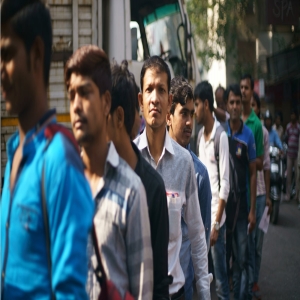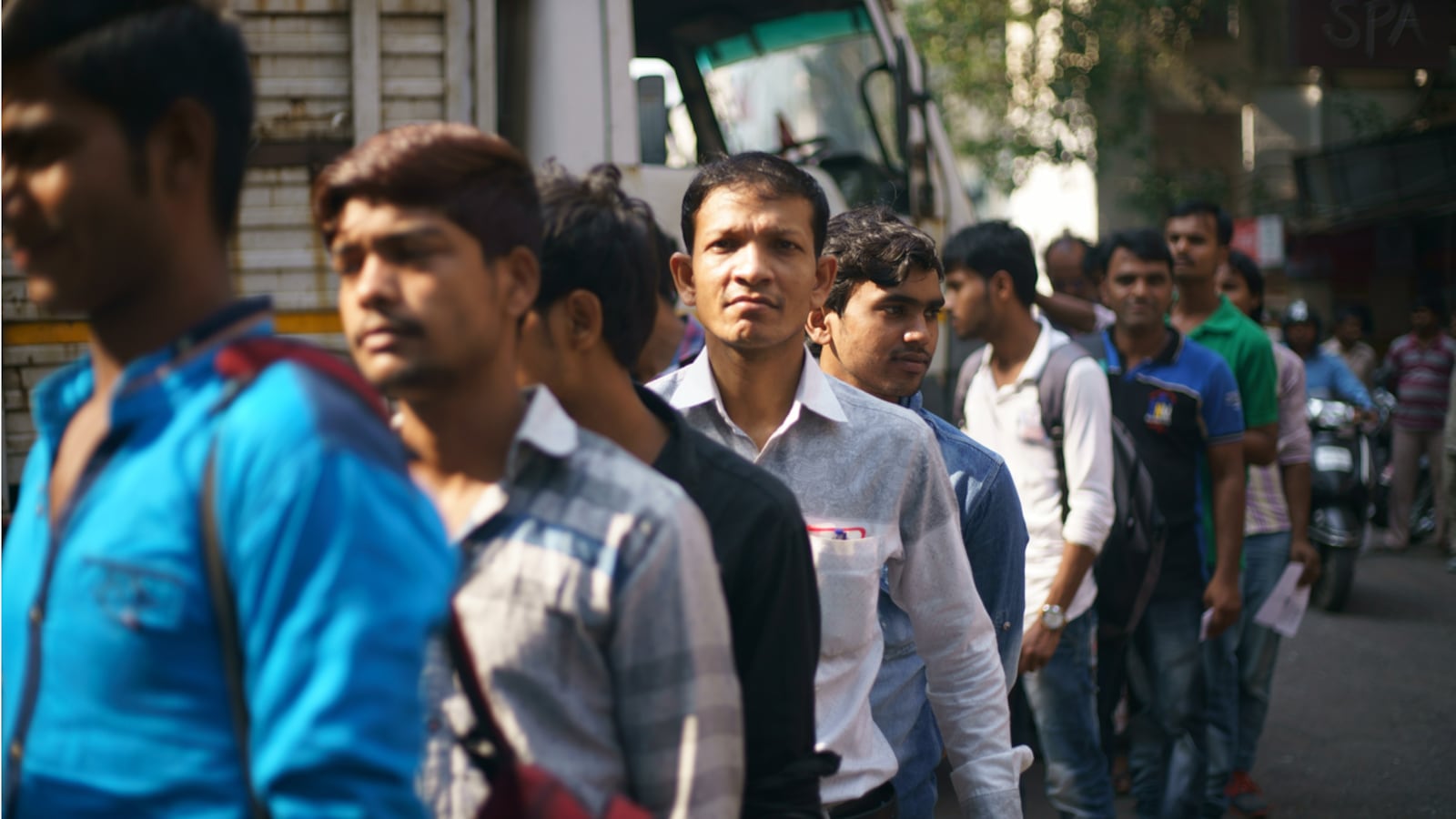
.png) Jaswant Kaur
Jaswant Kaur

Last week offered a telling commentary on the future of youth in India, a country that takes pride in its demographic dividend. Compared to most developed and developing nations grappling with ageing populations, India enjoys a unique advantage — over 50% of its population is under the age of 25, and more than 65% is under 35.
Graphically, this resembles a dome-shaped population pyramid, with a narrow top representing the elderly and a broad base comprising children and youth. As of 2025, our median age remains around 28.5 years.
Now, what does this structure signify? Anyone with a basic understanding would say that this is our moment to harness our youthful energy, catalyse growth, and outpace other economies. This is exactly what countries like Japan did when they experienced a boom in their demographic dividend. Today, as ageing societies, they are turning to younger nations like India. From casual labour to high-end tech solutions, opportunities are being outsourced to our youth to sustain their own pace of development.
In fact, as of December 2024, there were approximately 250,000 foreign nationals living in Japan, a significant increase in recent years, with a substantial proportion coming for professional roles, particularly in IT, healthcare, and engineering. Japan has significantly loosened immigration and residency rules to support immigrants from India and invests heavily in upscaling them to suit its evolving needs. It has been signing agreements with countries like India, with the foreign workforce expected to grow at least twice in the coming years. In other words, Japan has figured out a way to overcome challenges posed by its demographic structure.
Back in India, we came across a photograph of a young man sleeping outside a TCS office in Pune with a handwritten placard pleading for his pending salary. The post evoked a huge response on social media, forcing the company to respond immediately. He had allegedly been marked absent for the days he worked, and after failing to get any response internally, he decided to protest.
In another corner of the Internet, a manager's message to his team went viral. The WhatsApp screenshot posed an ultimatum to his team — either work on weekends or stay back late on weekdays, or "else face the consequences." On Reddit, a laid-off IT employee from Bengaluru asked a haunting question: "Are we even living, or just surviving?"
These may seem like isolated stories, but they are not. They are symptoms of a deeper drift in our work culture and speak about the direction in which we as a country are headed. It certainly poses a more nuanced question: Are we actually leveraging our demographic dividend, or is it a moment of slow and gradual demographic breakdown?
Over the years, we have seen how the hard-earned value of our degrees has plummeted; there is a flood of vacancies on platforms like LinkedIn, yet there are no jobs. Consider the recent layoffs at TCS. Around 12,000 employees, mostly in mid-management roles, were asked to leave. The company cited "realignment" and "skill mismatch."
This polite corporate statement hides a harsher truth. Many of these professionals were being quietly phased out, replaced by cheaper or more "AI-ready" alternatives. These were not underperformers. Many of them had worked for years, met targets, moved to metros or cities they perhaps would never want to stay in, leaving their families behind. But when the time came, they were labelled incompetent.
For decades, the middle class in India followed a regime: Work hard, study well, find a job in a metro, stay loyal to your employer, and your life will be secure. That promise has been broken. And it is not just the IT sector. Retrenchments and contract terminations are quietly happening across consulting, including the Big Four, fintech, edtech, and even healthcare.
In parallel, another strange phenomenon has evolved — the booming influencer-led course economy. It is not uncommon today to find IIT and IIM graduates running online businesses selling high-ticket courses, offering quick-fix solutions to make money. Be it artificial intelligence, trading, remote work, or even "how to create your own online course," the list is endless. These courses are sold for a few thousand bucks to costs that exceed a lakh of rupees. The tone is urgent and persuasive. "I am giving away this course that normally costs more than Rs. 3 lakh for just Rs. 99,999. And this offer is just for the first 20 seats. So, hurry up," one says.
Another promises a roadmap to earning in dollars from the US, Canada, or Dubai while sitting in India. These pitches are targeted, emotional, and deeply strategic. And clearly, their ideal customer is someone who has been recently laid off, uncertain, anxious, and looking for hope. These influencers exploit their vulnerabilities, fear of becoming irrelevant, and losing out on the current AI boom.
In a country with no real safety net, where severance packages are thin and reemployment is uncertain, these courses appear to be life-saving boats. But more often than not, they end up being leaky vessels. What gets delivered is a set of recorded videos, repackaged motivational talk, and a Telegram group.
For someone who has just lost their job, shelling out a lakh of rupees is not a pittance. It is often the last of their savings. And there is no regulation to keep a check on such courses. Of course, the government gets its share of GST, but is this all we can expect from the government?
At the other end of the spectrum is the healthcare sector. In a country that perennially laments its shortage of doctors, several thousand MBBS seats went vacant last year. In fact, this has been a trend over the last few years. And while presenting such figures, the so-called elected representatives take pride in saying that the number of vacant seats has reduced over the past couple of years.
Hundreds of thousands of young Indians work day and night to crack the NEET exam. They spend lakhs of rupees on specialised coaching. The poorest of the poor, who are unable to afford hefty fees, are left behind.
And yet, medical colleges struggle to fill their seats. The reasons are varied: high fees, poor-quality infrastructure, lack of faculty, and a growing disillusionment with the return on investment. The message is clear. Even in a profession that once promised stability and status, the pathways are not that promising. Many prefer to complete their medical courses overseas instead of in India.
So, what does all this say about us? Have we become a country where experience and qualification have no value? Where aspirations have plummeted to the lowest levels, where people prefer to leave — be it for education or jobs — where young graduates are being forced to join a gig economy offering little protection, and where a generation is being sold dreams on Instagram and LinkedIn under the guise of up-skilling?
We are simultaneously a country where skilled professionals are being told they are outdated and where millions of young people emerge from colleges each year without the skills the economy needs. We are a country where doctors are in short supply, and yet medical seats remain vacant. Where unemployment is high, yet job portals are filled with vacancies that go unfilled. We celebrate unicorns and Digital India, but still require employees to sleep outside offices to be heard.
It is easy to blame AI, the market, or global downturns. But the real crisis is one of design. Our education system continues to prioritise volume over value. Our work culture still mistakes burnout for commitment. Our policy frameworks lag behind the pace at which work and workplaces are evolving. And this vacuum is being filled by opportunists disguised as coaches and mentors.
A generation that was raised to believe that education is the path to dignity now finds itself doubting that belief. Parents who took loans to fund degrees are watching their children return home qualified but jobless. People in their thirties and forties, once confident professionals, now find themselves unsure of what skills to learn next or how to position themselves in a world that rewards visibility more than depth.
There is a restlessness in the air. A quiet anxiety is now starting to erupt in social media posts, protests, and resignation letters. People are not just asking for jobs. They are asking for dignity, for predictability, for something to believe in. They are asking for a system that does not just use them when they are young and discard them when they approach their 30s. They are asking for policies that do not treat human capital as disposable inventory.
And yet, what do we get in return? More slogans, more schemes, mere tweaks in policies by a handful of people sitting in AC rooms, fancy announcements, and advertisements about new skilling missions, but without any clear idea, target audience, or vision.
The truth is, we just do not have jobs. We need to reset our fundamentals in how we look at education, work, and ambition. We need regulation around predatory edtech and influencer-led course selling. We need stronger labour protection in sectors that have thrived on exemptions. We need medical education that is affordable, accessible, and aligned to actual healthcare needs. We need to move beyond the mythology of a demographic dividend and start investing in the difficult work of making it real.
If we continue on this path of layoffs without safety nets, work without empathy, education without direction, and skilling without scrutiny, we are preparing ourselves for nothing but a disaster that we cannot afford at any cost.